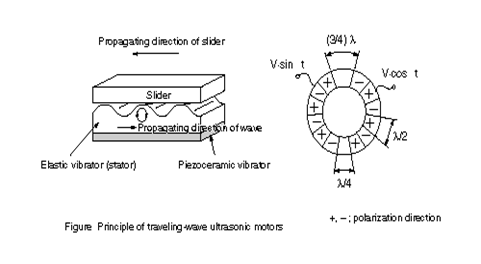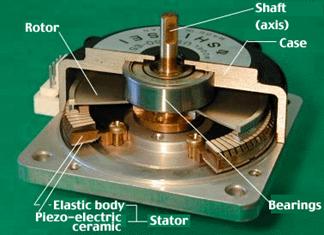Ultrasonic Motor
Published on Dec 06, 2015
Abstract
All of us know that motor is a machine which produces or imparts motion, or in detail it is an arrangement of coils and magnets that converts electric energy into mechanical energy and ultrasonic motors are the next generation motors.
In 1980,the world's first ultrasonic motor was invented which utilizes the piezoelectric effect in the ultrasonic frequency range to provide its motive force resulting in a motor with unusually good low speed, high torque and power to weight characteristics.
Electromagnetism has always been the driving force behind electric motor technology. But these motors suffer from many drawbacks. The field of ultrasonic seems to be changing that driving force.
DRAWBACKS OF ELECTROMAGNETIC MOTORS
Electromagnetic motors rely on the attraction and repulsion of magnetic fields for their operation. Without good noise suppression circuitry, their noisy electrical operation will affect the electronic components inside it. Surges and spikes from these motors can cause disruption or even damage in nonmotor related items such as CRTs and various types of receiving and transmitting equipments. Also , electromagnetic motors are notorious for consuming high amount of power and creating high ambient motor temperatures. Both are undesirable from the efficiency point of view. Excessive heat energy is wasted as losses. Even the efficiently rated electromagnetic motor has high input to output energy loss ratios.
Replacing these by ultrasonic motors would virtually eliminate these undesirable effects. The electromagnetic motors produce strong magnetic fields which cause interference. Ultrasonic motors use piezoelectric effect and hence no magnetic interference.
PRINCIPLE OF OPERATION
PIEZOELECTRIC EFFECT
Many polymers, ceramics and molecules are permanently polarized; that is some parts of the molecules are positively charged, while other parts are negatively charged. When an electric field is applied to these materials, these polarized molecules will align themselves with the electric field, resulting in induced dipoles within the molecular or crystal structure of the material. Further more a permanently polarized material such as Quartz(SiO2) or Barium Titanate(BaTiO3) will produce an electric field when the material changes dimensions as a result of an imposed mechanical force.
These materials are piezoelectric and this phenomenon is known as Piezoelectric effect. Conversely, an applied electric field can cause a piezoelectric material to change dimensions. This is known as Electrostriction or Reverse piezoelectric effect. Current ultrasonic motor design works from this principle, only in reverse.

When a voltage having a resonance frequency of more than 20KHz is applied to the piezoelectric element of an elastic body (a stator),the piezoelectric element expands and contracts. If voltage is applied, the material curls. The direction of the curl depends on the polarity of the applied voltage and the amount of curl is determined by how many volts are applied.
Eg:Quartz,Rochelle salt,Tourmaline,Lead Zirconium Titanate
It therefore does not make use of coils or magnets. It is a motor with a new concept that does not use magnetic force as its driving force. It also overcomes the principles of conventional motors. The working principle is based on a traveling wave as the driving force. The wave drives the comb of the piezoelectric ring. When applied, the piezoelectric combs will expand or contract corresponding to the traveling wave form and the rotor ring which is pressed against these combs start rotating.
CONSTRUCTION

Ultrasonic motor construction tends to be simpler than EM type motors. Fewer assembly parts mean fewer moving parts and consequently less wear. The number of components required to construct an USM is small thereby minimizing the number of potential failure points.
As the ultrasonic motor uses ultrasonic vibrations as its driving force,it comprises a stator which is a piezoceramic material with an elastic body attached to it,and a rotor to generate ultrasonic vibrations. It therefore does not use magnets or coils. Therefore there is no problem of magnetic field and interference as in the case of electric motors. In ultrasonic motors, piezoelectric effect is used and therefore generates little or no magnetic interference.
Constructionally,a stator and a rotor are coupled to form an ultrasonic motor. On one side of the metal stator, the piezoceramic is glued on.It is an element that generates ultrasonic vibrations when a high frequency voltage is applied. Ultrasonic motors make use of a ring shaped piezoelectric crystal with segments having sequentially reversed polarity.On the other side of the metal stator,comb tooth grooves are set up.The rotor (dynamic body) is pressed tightly against this side of the stator metal surface so that they are adhered together closely.